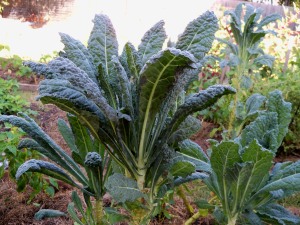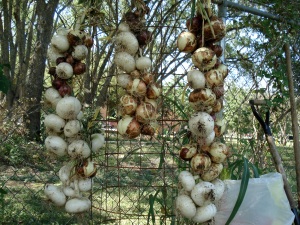
Kale is a superfood packed with nutrition. Vegans are very familiar with it because it supplies great amounts of calcium, magnesium and b vitamins that they are lack from consuming dairy products. Whole food vitamins are made with kale as the have a storehouse of nutrients ranging from Protein, Thiamin, Riboflavin, Folate, Iron, Magnesium and Phosphorus, and a very good source of Vitamin A, Vitamin C, Vitamin K, Vitamin B6, Calcium, Potassium, Copper and Manganese. It is very complete on the amino acid scale as well. In kale there are Isothiocyanates (ITCs) made from glucosinolates, these are healthy little guys that block cancer causing disease from attacking us. It has been shown that kale has been an effective against 5 different types of cancer. To read more about this follow this wonderful link. One more amazing fact about kale is that it has the highest concentration of xanthophyll carotenoids lutein and zeaxanthin out of all the vegetables. That is great news for your eyes. It is like sunscreen for kale and it helps protect your eyes from cataracts and macular degeneration. Wow, just one more reason to eat kale!
History
Now, for a little history on our friendly healer. It is said that kale was brought to Europe by around 600 BC by Celtic travelers. Kale was brought to the US by English settlers in the 17th century. Kale is actually a descendant of wild cabbage, which is in the cruciferae family. You are fond of many other vegetables in this family such as brussel sprouts, cabbage, broccoli, cauliflower, collards, and kale. There are two species of kale; Brassica napus includes such kale as Siberian kale and Red and White Russian kale and they are of the Pabularia group. These kale are frilly and softer than the Brassica oleraceae group. Those in the latter group include collards and Dinosaur kale. Dinosaur kale was discovered in italy in the late 19th century and has become very popular. Kale is a cool weather crop. Kale tastes better in the winter because the cold nights turn the starch into sugar in the leaves making them sweet. So when the nights start dipping down into the 40’s start running out and harvesting your kale and it will be sweet! That is why collards or dinosaur kale form the group Brassica Oleraceae are grown in the south in the summer more palatable than kale of the Brassica napus group.
Let me interject one very important thing about harvesting greens of any kind. This is the most important thing you will ever read, especially when it comes to harvesting greens in the summer. you must harvest your greens early in the morning when it is cool. I am sorry if you are not a morning person, I didn’t mean to ruin your day! Let me explain why and it will make perfect sense. There are bitter oils in the plants and they stay in they stems at night as the day progresses they go from the stems into the leaves of the plants. This will turn your kale, chard , lettuce and other greens bitter more and more as the day goes on. So we go back to that age old phrase “the early bird catches the worm!” If you practice this you will find your greens much sweeter. It is like harvesting an entirely different plant!
Growing Conditions
Plant about 4 plants of kale for the average person. Kale likes a PH between 5.5-6.5 Kale is a very heavy feeder. Make sure to incorporate a lot of compost and fertilizer before you plant kale, as it will be in the ground for a long time. Make sure to put it in a spot where you don’t want to move it. I once had kale in the ground for 5 1/2 years, they were wise old plants. It takes 5-10 days for kale to germinate at it’s optimal soil temperature of 70 to 75 degrees. Mid January and Mid August are going to be your direct seeding or seed starting times for kale.
We have two seasons here as kale does not like the heat. It will limp along in the summer though. Plant kale 1/4 to 1/2 inch deep, with a spacing of 12 to 18 inches apart. It is important to have room between plants so you have plenty of air circulation and do not get whiteflies in the fall. Keep the ground moist while you are waiting for the seeds to sprout. Kale only takes about 60 days before it is ready to eat once it is planted. Companion Plants for kale are Dill, Garbanzo, Garlic, Hyssop, Onion, Marigold, Mint, Nasturtium, Sage, Pennyroyal, Wormwood, Thyme, Radish, Southernwood, Celery, Peppermint, Beets, and Chamomile. Kale dislikes Mustard, Tomato, Pepper, Eggplant, Nightshades, Strawberries, and Pole Beans.
Make sure to give your kale a side dressing of compost or an organic fertilizer every month as it is a heavy feeder. It will also benefit from seaweed tea once and awhile. I strongly suggest giving your kale side dressing of amendments with calcium and magnesium as they are heavy feeders and they will produce more and stay in the ground longer, hence the kale that I had that lasted 5 years. Here is a good break down of some amendments to help you. Ellen at Garden-Ville will always be glad to help you if you are confused, just go in and talk to her. She is as sweet as pie! A good source of magnesium and sulfur is Epsom Salts, Greensand supplies magnesium as well as potash, iron and 30 trace minerals and loosens clay soils, gypsum delivers calcium without raising the soil ph.
Insects and Diseases
These are the common insects and diseases that effect kale. There are links to some of these on our web site.
Diseases
Damping-Off Disease A soil-borne fungus that affects both seeds and young transplants.Do not keep the soil too wet when seedlings are young.
Downy Mildew A disease that is caused by a fungus Peronospora parasitica attacks both seedlings and mature plants.
Alternaria Leaf Spot This fungus is frequent during warm moist conditions and is caused by Alternaria species.
Black Rot is caused by a bacterium, Xanthomonas campestris pathovar campestris.
Black Leg is caused by the fungus, Phoma lingam.
Wirestem is caused by the fungus, Rhizoctonia solani.
Fusarium Yellows A fungus that causes the leaves to turn yellow and die.
Clubroot a fungus that attacks the root of the crops.
Bacterial Soft Rot Healthy plants are the first line of defense. Many times the plants are stressed or either drought stricken.
Turnip Mosaic Virus(TuMV) a Potyvirus spread by aphids.
Cauliflower mosaic virus(CaMV) one of the Pararetroviruses.
Insects
Aphids follow our link
Cabbage Looper follow our link
Cutworm use Bt
Flea Beetles follow our link
Harlequin Bugs follow our link
Whiteflies follow our link
Seed Saving
To save seed you must isolate your kale 1/4 mile from any other members of the brassicas family. Tree lines, wood lots and buildings may be used to separate varieties. Harvest after the kale has flowered and the seed pods have dried and the seeds have become black. Be careful as the pods will shatter easily.
Cooking
Try kale raw in salads, braised, sautéed, boiled or steamed.
My favorite way to make kale is kale chips, I make them every week, sometimes twice a week because they are such a hit with my friends, click here for the recipe.
Kale Recipes uk, mariquita, kale
Filed under: Bugs in the Garden, Community Garden, Companion Planting, Crop Rotation, Edible San Marcos, gardening, Gardening 101, Gardening Tips, Green Living, New Gardener, New Gardeners, Permaculture, Recipes, San Marcos, TX, Starting an Organic Garden, Sustainable Living, Uncategorized, vegan | Leave a comment »






